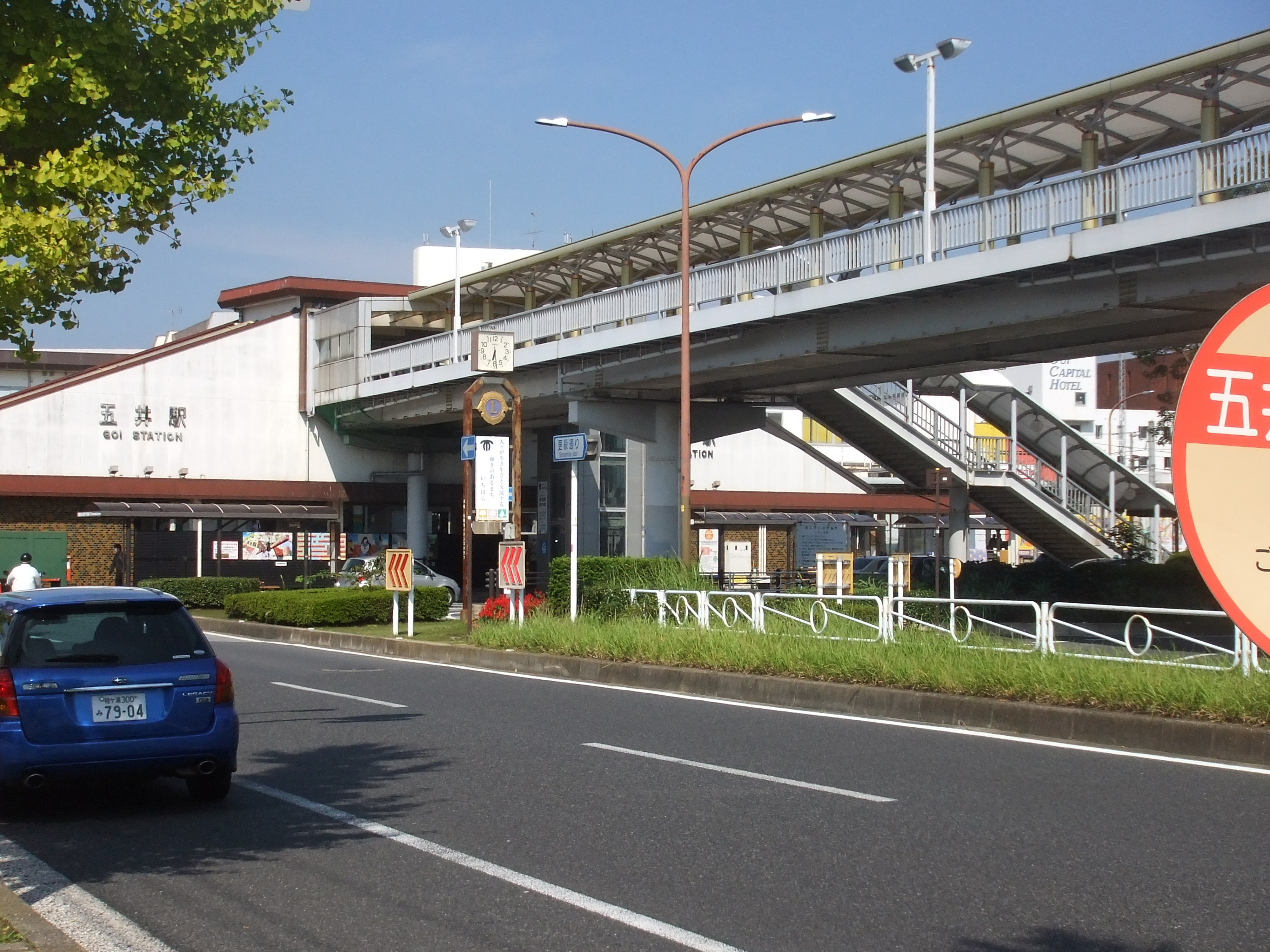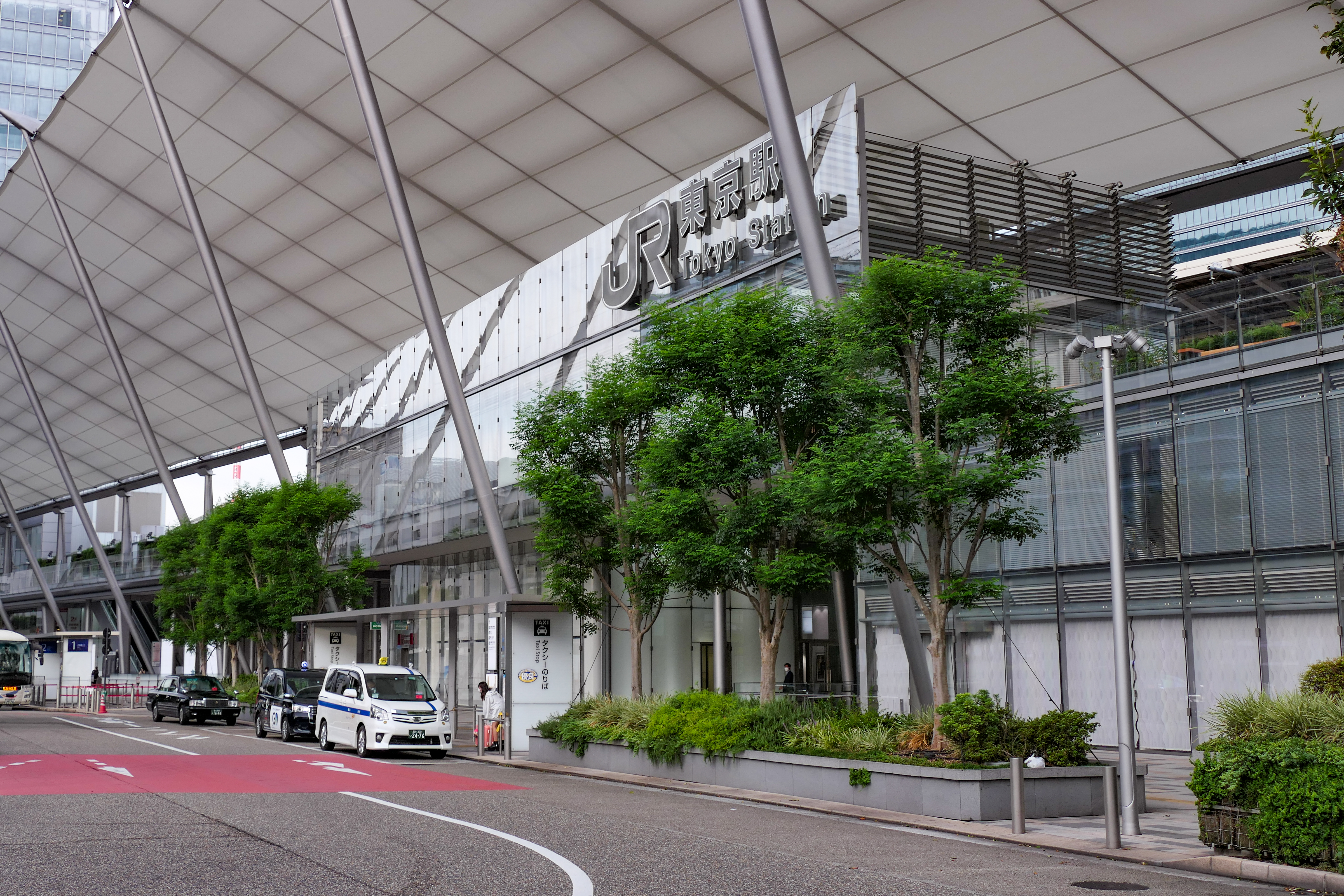|
Sazanami (train)
The is a limited express train service in Japan operated by East Japan Railway Company (JR East). It runs between and via the Keiyo Line and Uchibō Line. Seasonal ''Shinjuku Sazanami'' services operate at certain weekends between Shinjuku and Tateyama. Principal stations served Tokyo - Soga - Goi - ( Anegasaki) - Kisarazu - Kimitsu Rolling stock * E257-500 series 5-car EMUs File:E257-500 NB-13 - Shinjuku Sazanami - Akihabara 20100502.jpg, A E257-500 series EMU on a ''Shinjuku Sazanami'' service in May 2010 at Akihabara Station Former rolling stock * 255 series 9-car EMUs * 183/189 series 9-car EMUs File:Jr183-snjsazanami-skw-kiw.jpg, A 189 series EMU on a ''Shinjuku Sazanami'' service in February 2007 File:JR East 255 Limited Express Sazanami.jpg, A 255 series EMU on a ''Sazanami'' service in March 2008 History * 15 July 1972 - ''Sazanami'' service starts coinciding with opening of the underground Sōbu Line platforms at Tokyo Station. * 16 March 1991 - ''Saz ... [...More Info...] [...Related Items...] OR: [Wikipedia] [Google] [Baidu] |
Limited Express
A limited express is a type of express train service. It refers to an express service that stops at a limited number of stops in comparison to other express services on the same or similar routes. Japan The term "limited express" is a common translation of the Japanese compound noun ; literally "special express"; often abbreviated as . Although some operators translate the word differently, this section is about ''tokubetsu kyūkō'' trains in Japan regardless of the translation by the operators. This term also includes terms with ''limited express'' in them, such as . There are two types of limited express trains: intercity and commuter. The former type of limited express trains generally use long-distance coaches, equipped better than other ordinary express trains, including reserved seating, dining cars or food and beverage carts, and "green cars" (first class cars). The latter type of limited express train usually incurs no surcharge, but seating is usually first-come, f ... [...More Info...] [...Related Items...] OR: [Wikipedia] [Google] [Baidu] |
Soga Station
is a junction railway station located in Chūō-ku, Chiba, Chiba Prefecture, Japan, operated by the East Japan Railway Company (JR East). It is also freight depot for the Japan Freight Railway Company (JR Freight) and the all-freight Keiyō Rinkai Railway Company. Lines Soga Station is the northern terminal station for the Uchibō Line and is from the northern terminus of the Sotobō Line at Chiba Station. It is from the terminus of the Keiyō Line at Tokyo Station. The station is also the starting point of the Keiyō Rinkai Railway's Rinkai Main Line. Station layout Soga is an elevated station with an elevated station building, three island platforms and a total of six passenger lines. Freight lines are located to the side of the first platform, and the Keiyō Rinkai Railway office is located to the side of these. The station is staffed with personnel from both companies. It includes a ''Midori no Madoguchi'' staffed ticket office and automatic ticket gates. Platforms ... [...More Info...] [...Related Items...] OR: [Wikipedia] [Google] [Baidu] |
Named Passenger Trains Of Japan
Named may refer to something that has been given a name. Named may also refer to: * named (computing), a widely used DNS server * Naming (parliamentary procedure) * The Named (band), an American industrial metal group In literature: * ''The Named'', a fantasy novel by Marianne Curley * The Named, a fictional race of prehistoric big cats, depicted in ''The Books of the Named'' series by Clare Bell See also * Name (other) * Names (other) Names are words or terms used for identification. Names may also refer to: * ''Names'' (EP), by Johnny Foreigner * ''Names'' (journal), an academic journal of onomastics * The Names (band), a Belgian post-punk band * ''The Names'' (novel), by ... * Naming (other) {{disambiguation ... [...More Info...] [...Related Items...] OR: [Wikipedia] [Google] [Baidu] |
List Of Named Passenger Trains Of Japan
This article contains lists of named passenger trains in Japan. Shinkansen (bullet trains) Daytime trains Limited express (partial list) Express Rapid Night trains Limited express Express Rapid See also * Rail transport in Japan References * JR Timetable, December 2008 * * {{reflist List of named passenger trains of Japan Japan Japan ( ja, 日本, or , and formally , ''Nihonkoku'') is an island country in East Asia. It is situated in the northwest Pacific Ocean, and is bordered on the west by the Sea of Japan, while extending from the Sea of Okhotsk in the north ... Named passenger trains ... [...More Info...] [...Related Items...] OR: [Wikipedia] [Google] [Baidu] |
Tokyo Bay Aqua-Line
The , also known as the Trans-Tokyo Bay Expressway, is an expressway that is mainly made up of a bridge–tunnel combination across Tokyo Bay in Japan. It connects the city of Kawasaki in Kanagawa Prefecture with the city of Kisarazu in Chiba Prefecture, and forms part of National Route 409. With an overall length of 23.7 km, it includes a 4.4 km bridge and 9.6 km tunnel underneath the bay—the fourth-longest underwater tunnel in the world. Overview An artificial island, , marks the transition between the bridge and tunnel segments and provides a rest stop with restaurants, shops, and amusement facilities. A distinctive tower standing above the middle of the tunnel, the Kaze no Tō (の, "the tower of wind"), supplies air to the tunnel, its ventilation system powered by the bay's almost-constant winds. The ¥1.44 trillion (US$11.2 billion) roadway opened December 18, 1997, after 23 years of planning and nine years of construction. The Tokyo Bay Aqua-Li ... [...More Info...] [...Related Items...] OR: [Wikipedia] [Google] [Baidu] |
255 Series
The , branded , is a DC electric multiple unit (EMU) train type operated by East Japan Railway Company (JR East) in Japan. It was introduced into commercial service on 2 July 1993, and was specifically designed to be used limited express services from Tokyo to the Bōsō Peninsula. Design The trains were built jointly by Kinki Sharyo and Tokyu Car, with a steel body design based directly on the earlier 253 series EMUs built for ''Narita Express'' services, although the window height was increased by . It is the first JR East limited express rolling stock to feature VVVF Gate turn-off thyristor traction control systems, based on the results of trials with the prototype 209 series commuter EMUs. DT56E bogies are used on motored cars, and TR241E bogies are used on trailer cars. Operations Sōbu Main Line * ''Shiosai'': Tokyo - (since 10 December 2005) Sotobō Line * ''Wakashio'': - Tokyo * ''Shinjuku Wakashio'': Shinjuku - Formations The five 9-car sets, numbered Be01 to ... [...More Info...] [...Related Items...] OR: [Wikipedia] [Google] [Baidu] |
Kimitsu Station
is a passenger railway station in the city of Kimitsu, Chiba Prefecture, Japan, operated by the East Japan Railway Company (JR East). Lines Kimitsu Station is served by the Uchibō Line, and is located from the starting point of the line at Soga Station. Station layout The station consists of an island platform and a side platform serving three tracks, connected to the station building by a footbridge. The station has a "Midori no Madoguchi" ticket counter. Platforms History The station opened on January 15, 1915, as on the Japanese Government Railways (JGR) Kisarazu Line. On May 24, 1919, the line was renamed the Hōjō Line, on April 15, 1929, it became the Bōsō Line, and on April 1, 1933, it became the Bōsōnishi Line. It became part of the Japanese National Railways (JNR) after World War II. The station was renamed to Kimitsu Station on April 1, 1956, and the line was renamed the Uchibō Line from July 15, 1972. Kimitsu Station was absorbed into the JR East network ... [...More Info...] [...Related Items...] OR: [Wikipedia] [Google] [Baidu] |
Kisarazu Station
is a junction passenger railway station in the city of Kisarazu, Chiba Prefecture, Japan, operated by the East Japan Railway Company (JR East). Lines Kisarazu Station is served by the Uchibō Line and Kururi Line. It is 31.3 kilometers from the starting point of the Uchibō Line at Soga Station and forms the eastern terminus of the 32.3 kilometer Kururi Line. Station layout The station consists of two island platforms serving four tracks, connected to the station building by a footbridge. The station has a "Midori no Madoguchi" staffed ticket office. Platforms History Kisarazu Station opened on August 21, 1912. The station was absorbed into the JR East network upon the privatization of JNR on April 1, 1987. Bus terminals Highway buses * For Narita International Airport * For Haneda Airport * For Tokyo Station * For Shinjuku Station * For Shinagawa Station * For Kawasaki Station * For Yokohama Station Passenger statistics In fiscal 2019, the station was used by a ... [...More Info...] [...Related Items...] OR: [Wikipedia] [Google] [Baidu] |
Anegasaki Station
file:JREast-Uchibo-line-Anegasaki-station-platform.jpg, 260px, the platforms is a passenger railway station in the city of Ichihara, Chiba, Ichihara, Chiba Prefecture, Japan, operated by the East Japan Railway Company (JR East). Lines Anegasaki Station is served by the Uchibo Line, and lies 15.1 kilometers from the terminus of the line at Soga Station. Station layout The station consists of two island platforms with an elevated station building. The station has a ''Midori no Madoguchi'' staffed ticket office. The station has shunts between northbound and southbound tracks which are used during busy periods by trains connected to Tsudanuma Station, Tsudanuma and Tokyo Station, Tokyo which have Anegasaki as their terminus. Platforms History Station was opened on March 28, 1912 as a station on the Japanese Government Railways (JGR) Kisarazu Line. On May 24, 1919, the line's name changed to the Hōjō Line, and on April 15, 1929 to the Bōsō Line and on April 1, 1933 to the Bō ... [...More Info...] [...Related Items...] OR: [Wikipedia] [Google] [Baidu] |
Goi Station
is a railway station in Ichihara, Chiba, Japan, operated by the East Japan Railway Company (JR East) and the private railway operator Kominato Railway. Lines Goi station is served by the Uchibo Line and the Kominato Line. Station layout The station has a different address for each company. The address for JR East is 2-1-11 Goi-Chūō-Nishi, Ichihara, Chiba, and the address for the Kominato Railway is 1-1-2 Goi-Chūō-Higashi, Ichihara, Chiba. The station has four tracks with two island platforms, one for the Uchibō line and another for the Kominato line. Platforms History The JNR station opened on March 28, 1912. JR East. Retrieved on 17 July 2008. The Kominato Railway station opened on March 7, 1925. Passenger statistics In fiscal 2005, the JR East station was use ...[...More Info...] [...Related Items...] OR: [Wikipedia] [Google] [Baidu] |
Tokyo Station
Tokyo Station ( ja, 東京駅, ) is a railway station in Chiyoda, Tokyo, Japan. The original station is located in Chiyoda's Marunouchi business district near the Tokyo Imperial Palace, Imperial Palace grounds. The newer Eastern extension is not far from the Ginza commercial district. Due to the large area covered by the station, it is divided into the Marunouchi (west) and Yaesu (east) sides in its directional signage. Served by the high-speed rail lines of the Shinkansen network, Tokyo Station is the main inter-city rail terminal in Tokyo. It is the busiest station in Japan, with more than 4,000 trains arriving and departing daily, and the fifth-busiest in Eastern Japan in terms of passenger throughput; on average, more than 500,000 people use Tokyo Station every day. The station is also served by many regional commuter lines of Japan Railways, as well as the Tokyo Metro network. Lines Trains on the following lines are available at Tokyo Station: * ** Tōhoku Shinkansen ** ... [...More Info...] [...Related Items...] OR: [Wikipedia] [Google] [Baidu] |
.png)


